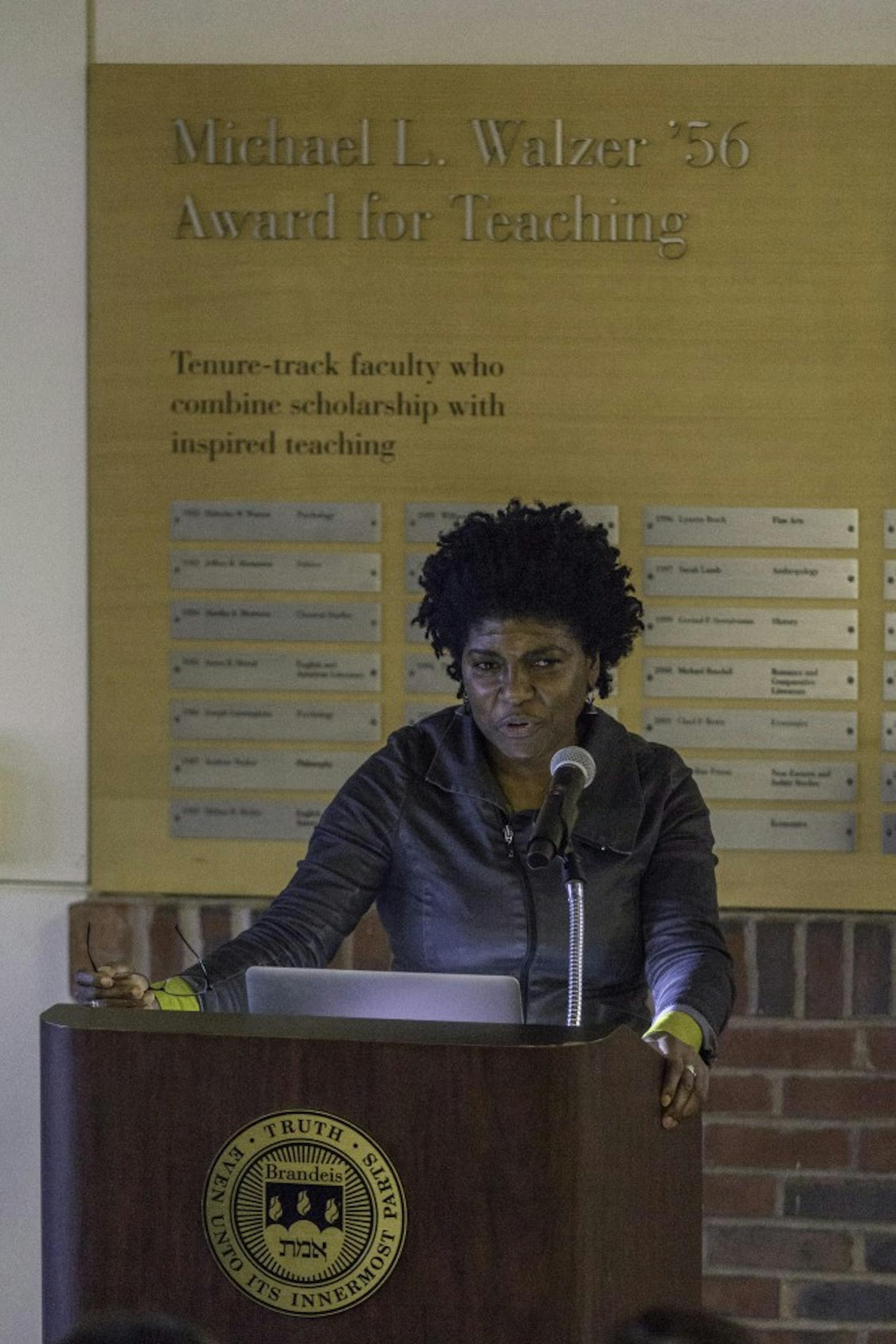Maria Magdalena Campos-Pons shares historical influences on her work
This year’s annual Roosevelt Lecture, part of the Eleanor Roosevelt Lecture series dedicated to social justice and women’s history, celebrated the impact of critically acclaimed painter, sculptor, installation artist and videographer Maria Magdalena Campos-Pons. The focus was a display of her video “Rite of Initiation Sacred Bath (1991)” and images of her installation piece “Alchemy of the Soul, Elixir for the Spirits (2015).” The event was sponsored by the Women’s, Gender, and Sexuality Studies program, the African and Afro-American Studies department, the division of Creative Arts, the department of Fine Arts and the Rose Art Museum.
Campos-Pons is the Vanderbilt Cornelius endowed chair of Fine Arts at Vanderbilt University. Her work has been featured at the Rose Art Museum and other prominent galleries such as the Museum of Fine Arts, Boston.
Introducing the event, Prof. Wendy Cadge (WGS), program chair of the WGS program, explained how influential Campos-Pons’ life was for her own immersion into the arts. Born in Cuba on the sugar plantation of Matanzas, Cuba, Campos-Pons’ work holds true to her complex ancestry, as she is of Nigerian, Hispanic and Chinese heritage, Cadge said.
Prof. Gannit Ankori (FA) explained that Campos-Pons’ art evokes stories of “the transatlantic slave trade, indigo and sugar plantations, oppression and resilience.” She said Campos-Pons’ work “highlights and echoes her complex heritage” by combining diverse media such as photography, performance, painting, film and video to metaphysically represent her experiences.
Campos-Pons began her presentation, “She Knew Long Before of the Space In-between,” by explaining her own experiences in the third person: “She knew of the space between freedom and entrapment, between passivity and action.” Campos-Pons used these distinct contrasts to explain her belief that “only through art did she find a voice of loyal cause.” She explained that her goal was to take the audience “captive” as she displayed her first piece, a video called “Rite of Initiation Sacred Bath.” The piece showed a figure grasping a jar filled with water, then meticulously and carefully filling five drinking glasses and using those same glasses to fill a basin to wash her feet. She said that she wanted her piece to show how “the constructional narrative of moving image” can make the audience consider difficult questions. She explained further that “art does not provide answers” but instead serves “to create questions.”
Campos-Pons believes that art can “be a material and a territory for healing and transcending reality.” She showed the audience images of one of her recent projects, “Alchemy of the Soul, Elixir for the Spirit.” The piece is is a multi-stage installation piece installed at the Peabody Essex Museum in Salem, Massachusetts and is made by using glass, steel, resin, acrylic, silicone, polyvinyl chloride tubing, water and rum to visually represent the remnants of Cuban sugar plantations, sugar mills and rum distilleries. The piece represents art “as a material necessary for healing” because her artworks allow the history of Cuban sugar plantations to be expressed and eternally retold. She connected this piece to her earlier works, such as “Sugar/Bittersweet,” a piece displayed at Smith College, which represents the social and political effect of sugarcane harvesting in Cuba.
In an interview with the Justice, Campos-Pons explained that her main focus during the event was her technique of “moving image,” exemplified by “Rite of Initiation Sacred Bath.” She explained that this piece was “a different way to construct narratives on topics that [she is] interested in,” including the history of her own immigration and exile. She added that her work also focuses on “claiming” her history “to propose a new narrative for this reality.” Through art, Campos-Pons said, she “embraces [her] humanity” by creating pieces that evoke discussion not only about Black and cultural issues, but also grounded human issues.
Campos-Pons explained that her motivation behind her work lies not within “wanting to be famous,” but instead “to be better.”



Please note All comments are eligible for publication in The Justice.